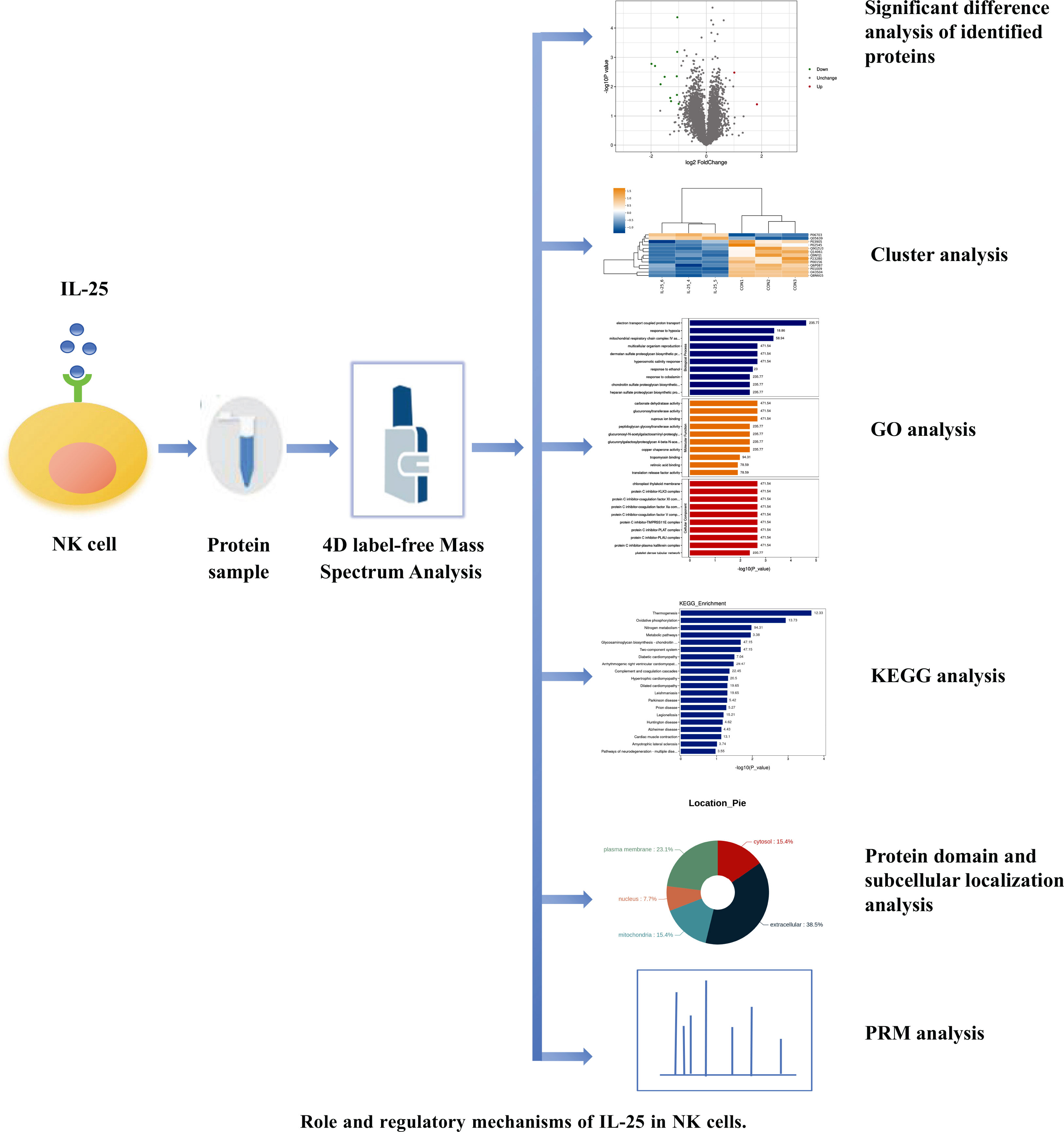4D-PRM Target Proteomics Services
4D-PRM Target Proteomics Services enhance traditional PRM-based proteomics by incorporating a fourth dimension—Ion Mobility (IM)—to improve resolution and quantification accuracy. This approach is particularly effective for the precise detection of low-abundance proteins and quantitative analysis of complex biological samples. Building on retention time, mass-to-charge ratio (m/z), and ion intensity, 4D-PRM Target Proteomics introduces Ion Mobility that separates ions based on their shape and cross-sectional area. This additional dimension enables the differentiation of peptides with minimal mass-to-charge ratio (m/z) differences, allowing for more precise detection and identification of low-abundance protein signals. Leveraging an advanced mass spectrometry platform, MtoZ Biolabs offers 4D-PRM Target Proteomics Services providing deeper quantitative insights for disease mechanism research, precision medicine, and biomarker discovery.

Brzhozovskiy A. et al. Analytical Chemistry. 2022.
Technical Principles
In 4D-PRM Target Proteomics Services, PRM (Parallel Reaction Monitoring) employs high-resolution mass spectrometry to comprehensively scan target peptides and their fragment ions, ensuring highly accurate targeted quantification. Meanwhile, 4D-IMS (Ion Mobility Separation, IMS) introduces ion mobility separation as a fourth-dimensional data parameter. By integrating m/z, intensity, retention time, and ion mobility time, this approach enables more refined separation, enhances analytical resolution, and reduces background interference. By combining these two technologies, 4D-PRM significantly improves detection depth, allowing for the precise identification and quantification of low-abundance proteins in complex samples.
Analysis Workflow
1. Sample Preparation
Standardized protocols are followed for protein extraction and enzymatic digestion.
2. Liquid Chromatography Separation
Peptides are separated using an ultra-performance liquid chromatography (UPLC) system.
3. 4D-PRM Mass Spectrometry Detection
PRM is used for precise quantification of target peptides, while 4D-IMS further optimizes peptide separation, enhancing specificity and reducing background interference.
4. Data Analysis & Reporting
Absolute or relative quantification of target proteins is performed. Bioinformatics analysis is conducted, and a comprehensive, visualized data report is provided.
Service Advantages
1. Advanced Analysis Platform: MtoZ Biolabs established an advanced 4D-PRM Target Proteomics Services platform, guaranteeing reliable, fast, and highly accurate analysis service.
2. One-Time-Charge: Our pricing is transparent, no hidden fees or additional costs.
3. High-Data-Quality: Deep data coverage with strict data quality control. AI-powered bioinformatics platform integrates all 4D-PRM Target Proteomics Services data, providing clients with a comprehensive data report.
4. Enhanced Data Stability: The combination of 4D-IMS and PRM provides a higher signal-to-noise ratio (S/N), reduces misidentifications, and improves data reproducibility.
Applications
Biomarker validation
4D-PRM Target Proteomics Services can be used for precise quantitative research on biomarkers such as cancer and neurodegenerative diseases.
Low-abundance protein detection
It can be used for key regulatory protein analysis in metabolism, immunity, and signaling pathway research.
Clinical research
4D-PRM Target Proteomics Services can be used for disease monitoring, personalized medicine, and drug mechanism research in precision medicine.
Post-translational modification (PTMs) analysis
It can be used for targeted quantification of PTM-modified proteins such as phosphorylation and acetylation.
FAQ
Q. How to use 4D-PRM technology to verify biomarkers? Can it be applied in clinical samples?
4D-PRM combines high-resolution mass spectrometry and ion mobility separation technology to accurately quantify low-abundance biomarkers in complex samples (such as serum, urine, and cerebrospinal fluid). The process of using 4D-PRM technology to verify biomarkers can be divided into: 1) Biomarker screening: First use DIA or proteome database for large-scale screening to determine potential marker proteins. 2) 4D-PRM precision verification: Use highly selective PRM quantification, combined with ion mobility technology (IMS) to further enhance detection specificity, reduce background noise, and improve biomarker detection accuracy.
4D-PRM technology has been widely used in clinical samples, such as marker research in the fields of cancer, cardiovascular disease, and neurodegenerative diseases, and can achieve high-throughput sample detection.
Q. How to remove background noise and ensure data authenticity during 4D-PRM data analysis?
In 4D-PRM data analysis, the following strategies are needed to remove background noise and improve data accuracy:
1. Optimize ion migration window: Set a suitable ion migration window in the 4D-IMS dimension to exclude interference from non-target peptides and improve the selectivity of targeted peptide quantification.
2. Use Skyline or SpectroDive for high-precision data analysis: Use machine learning algorithms combined with feature matching to eliminate non-specific signals and improve quantitative stability.
3. Set signal-to-noise ratio threshold (S/N): For targeted peptides, S/N > 10 is usually set as the screening standard for valid data to filter low-confidence data.
4. Multiple filtering verification: Combine the retention time of co-eluting peptides, the abundance matching of fragment ions, and the ion migration characteristics to conduct comprehensive screening to improve data reliability.
5. Batch calibration: Normalize signal drift using isotope-labeled internal standards or external standard curves to ensure comparability of data across batches.
Deliverables
1. Comprehensive Experimental Details
2. Materials, Instruments, and Methods
3. Total Ion Chromatogram & Quality Control Assessment (project-dependent)
4. Data Analysis, Preprocessing, and Estimation (project-dependent)
5. Bioinformatics Analysis
6. Raw Data Files
Case Study
This study used 4D-PRM Target Proteomics technology to study the role of IL-25 in natural killer (NK) cells and its regulatory mechanism. The results showed that IL-25 can regulate a series of proteins related to immune signaling, cell survival and inflammatory response. These proteins are involved in the JAK-STAT signaling pathway and cytokine regulatory network, indicating that IL-25 plays a key role in regulating NK cell function.

Feng J. et al. Protein and peptide letters. 2023.
How to order?







